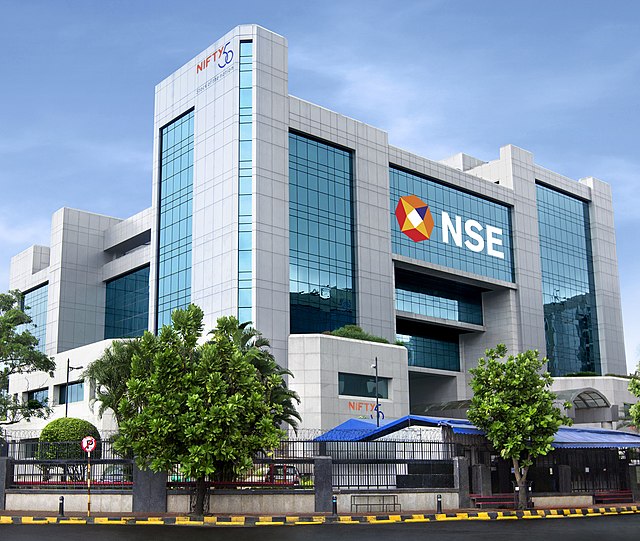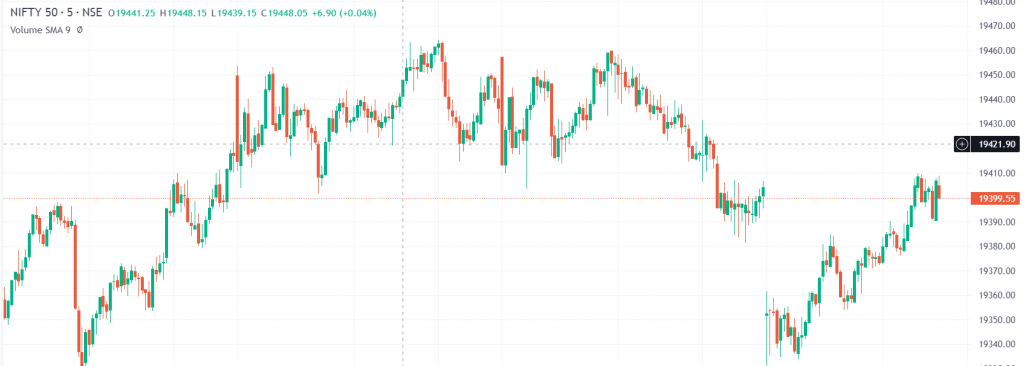India’s financial arena, bustling with activity and rife with opportunity, finds its pulse in the Nifty 50. For the uninitiated, this term might seem like just another financial jargon. But for seasoned investors, market watchers, and finance enthusiasts, Nifty 50 paints a vivid picture of the Indian stock market’s vitality.

Tracing the Genesis: Nifty’s Origin Story
The year 1996 marked a significant milestone in India’s financial market history. The National Stock Exchange introduced the Nifty, culminating from the term National Stock Exchange 50. But what was its purpose? Nifty was designed to provide a clear, cohesive snapshot of the performance of 50 of India’s most robust and liquid companies. And in doing so, it would serve as the prime benchmark for India’s equity market dynamics.
From its initial days to the present, Nifty’s journey has been nothing short of spectacular. It evolved from its original moniker, CNX Nifty, undergoing a strategic rebranding in 2015 to emerge as the now familiar Nifty50. But Nifty’s ambition wasn’t just limited to domestic recognition. Demonstrating its global aspirations, the NSE made a strategic move in 2016. It launched the Nifty 50 Index futures on TAIFEX, effectively extending Nifty’s influence on international trading platforms.

Market Capitalization: Unravelling the Numbers
For those outside the finance circle, market capitalization might sound like a complex term. But at its core, it’s a simple yet powerful metric. Market capitalization, often called market cap, provides a comprehensive value of a company or, in Nifty’s case, an index. For the Nifty, this figure is a monumental ₹1.5 lakh crore.
To arrive at this number, one needs to multiply each stock’s current price in the Nifty by its total outstanding shares. The resulting figure isn’t just a testament to Nifty’s scale. It’s a reflection of the collective financial prowess of 50 of India’s top companies and their impact on the overall economic landscape.
A Spectrum of Indices: NSE’s Diverse Offerings
The National Stock Exchange is not a one-trick pony, and while the Nifty50 is undoubtedly its star attraction, the NSE’s ambit extends much further. Investors and traders can explore a broad spectrum of indices, from overarching market indices to specific sectoral and thematic ones. And for those with an inclination towards fixed income, the NSE has indices tailored for them as well. This diversity underscores the NSE’s commitment to cater to a wide range of investor needs and preferences.
The Elite Club: How Does a Company Join the Nifty 50?
Earning a spot in the Nifty 50 isn’t an easy feat. After all, it’s a select group representing India’s corporate elite. To be part of this prestigious index, companies must meet a series of stringent criteria:
- Company Structure: Only public limited companies are considered, emphasizing transparency and governance.
- Capital Threshold: A company needs a minimum paid-up capital of Rs. 50 crore, ensuring that only substantial players make the cut.
- Listing Tenure: Freshly listed companies don’t qualify immediately. A six-month listing on the NSE is mandatory, although IPOs get some relaxation, requiring only a month.
- Trading Criteria: A company’s shares should be available for trading in the Futures and Options segment. This criteria not only reflects the company’s size but also offers additional trading avenues for market participants.
- Financial Metrics: A dual threshold of market capitalization at Rs. 10,000 crore and a six-month average daily turnover of Rs. 10 lakhs is set. This ensures that the company has significant market presence and activity.
- Profitability Check: Companies must have consistently performed well, with positive net profits across the last three fiscal years.
- Debt Management: Ensuring a company isn’t overly burdened with debt, a maximum debt-to-equity ratio of 2 is stipulated.
The Nifty and the Sensex are both stock market indices that represent the performance of companies listed on the Indian stock market, but they have some key differences:
Exchange - Nifty: Also known as the Nifty 50, it is the flagship index of the National Stock Exchange of India (NSE).
- Sensex: Short for the Sensitive Index, it is the benchmark index of the Bombay Stock Exchange (BSE).
Number of Constituents - Nifty: Comprises the top 50 most traded stocks on the NSE.
- Sensex: Contains 30 of the largest and most actively traded stocks on the BSE.
Base Year and Value - Nifty: The base year is 1995, and it began with a base value of 1,000 points.
- Sensex: It has a base year of 1978-79 and a base value of 100 points.
Selection of Stocks - Nifty: The stocks are chosen based on liquidity, trading frequency, and other factors. They are from varied sectors reflecting the overall market.
- Sensex: The stocks are selected on the basis of market capitalization, liquidity, and sector representation.
While both Nifty and Sensex are barometers of the Indian stock market, investors may prefer Nifty for a broader market representation due to its 50 constituents, while Sensex, with its 30 stocks, is often looked upon for its historical perspective. Ultimately, the choice between the two often comes down to individual investment objectives and the specific market segments an investor wishes to track.
For market watchers and participants, the Nifty 50 isn’t just an index. It encapsulates the essence of India’s corporate sector, reflecting its strengths, challenges, and growth prospects. It offers a window into the health of the nation’s economy, capturing market sentiment and investor confidence. As India continues its ascent on the global financial stage, the Nifty 50 stands tall, echoing the nation’s ambitions, achievements, and aspirations.
